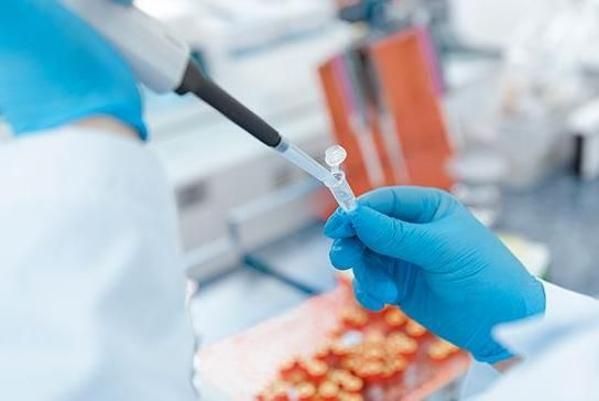(FM) Inmunología
Departamento académico


Instituto de Investigación Sanitaria de Navarra
Pamplona, EspañaPublicaciones en colaboración con investigadores/as de Instituto de Investigación Sanitaria de Navarra (126)
2024
-
CD137 (4-1BB) and T-Lymphocyte Exhaustion
Clinical cancer research : an official journal of the American Association for Cancer Research, Vol. 30, Núm. 18, pp. 3971-3973
-
Cytotoxicity as a form of immunogenic cell death leading to efficient tumor antigen cross-priming
Immunological Reviews, Vol. 321, Núm. 1, pp. 143-151
-
Dendritic Cells in Cancer Immunology and Immunotherapy
Cancers, Vol. 16, Núm. 5
-
Double-Stranded RNA to Mimic Viral Infection for Cancer Immunotherapy
Clinical cancer research : an official journal of the American Association for Cancer Research, Vol. 30, Núm. 16, pp. 3355-3357
-
Immunogenicity and Efficacy of Personalized Adjuvant mRNA Cancer Vaccines
Cancer discovery, Vol. 14, Núm. 11, pp. 2021-2024
-
Intratumoral NK cell delivery combined with neutralization of the NKG2A pathway as treatment for solid cancer
Genes and Immunity, Vol. 25, Núm. 5, pp. 437-439
-
Low-Dose Ionizing γ-Radiation Elicits the Extrusion of Neutrophil Extracellular Traps
Clinical cancer research : an official journal of the American Association for Cancer Research, Vol. 30, Núm. 18, pp. 4131-4142
-
MHC class I and II-deficient humanized mice are suitable tools to test the long-term antitumor efficacy of immune checkpoint inhibitors and T-cell engagers
Journal for immunotherapy of cancer, Vol. 12, Núm. 9
-
Regional and intratumoral adoptive T-cell therapy
Immuno-Oncology and Technology, Vol. 24
-
Short-term cultured tumor fragments to study immunotherapy combinations based on CD137 (4-1BB) agonism
OncoImmunology, Vol. 13, Núm. 1
-
Spatially resolved tissue imaging to analyze the tumor immune microenvironment: beyond cell-type densities
Journal for immunotherapy of cancer, Vol. 12, Núm. 5
-
The liver as a cytokine factory working on mRNA blueprints for cancer immunotherapy
Cancer Cell
-
Tumor slice culture system for ex vivo immunotherapy studies
Methods in Cell Biology, Vol. 189, pp. 55-69
-
Whole exome sequencing and machine learning germline analysis of individuals presenting with extreme phenotypes of high and low risk of developing tobacco-associated lung adenocarcinoma
eBioMedicine, Vol. 102
2023
-
CD137 (4-1BB) requires physically associated cIAPs for signal transduction and antitumor effects
Science advances, Vol. 9, Núm. 33, pp. eadf6692
-
CD137 (4-1BB)-Based Cancer Immunotherapy on Its 25th Anniversary
Cancer discovery, Vol. 13, Núm. 3, pp. 552-569
-
Clinical implications of changing thyroglobulin and antithyroglobulin antibodies analytical methods in the follow-up of patients with differentiated thyroid carcinoma
Clinica Chimica Acta, Vol. 548
-
Druggable Targets in Cytokine Release Syndromes
Clinical Cancer Research, Vol. 29, Núm. 21, pp. 4320-4322
-
Facts and Hopes on Neutralization of Protumor Inflammatory Mediators in Cancer Immunotherapy
Clinical cancer research : an official journal of the American Association for Cancer Research, Vol. 29, Núm. 23, pp. 4711-4727
-
Interleukin-18 in cancer immunology and immunotherapy
Expert Opinion on Therapeutic Targets, Vol. 27, Núm. 11, pp. 1035-1042